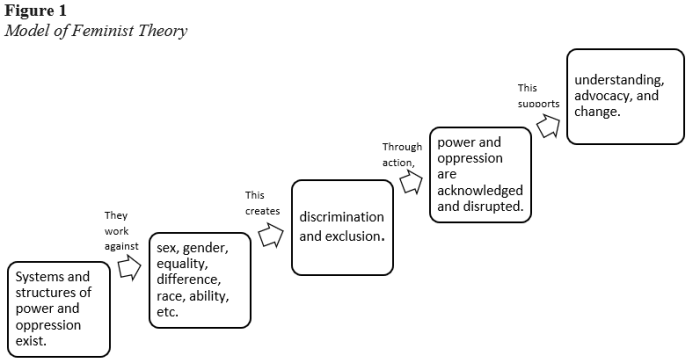The feminist belief that working women can “have it all” – a successful career, a fulfilling family life, and personal fulfillment – has been a topic of debate for decades. While this aspiration has inspired many women to pursue their dreams, it has also created a false hope that can lead to feelings of guilt, inadequacy, and burnout.
In this essay, we will explore the reasons why the belief that working women can have it all is often unrealistic. We will examine the societal pressures and expectations that contribute to this false hope, as well as the impact it has on women’s mental and physical health.
We will also discuss alternative perspectives on the issue of working women and offer strategies for challenging the false hope and promoting a more equitable society.
The Impact on Women
The false hope that working women can “have it all” has a profound impact on their careers and personal lives. It sets them up for unrealistic expectations and feelings of inadequacy when they are unable to meet these expectations.
The psychological and emotional toll of this false hope can be significant. Women may feel guilty or like they are not good enough if they cannot balance their work and family life perfectly. They may also experience stress, anxiety, and depression as they try to live up to the impossible standard of “having it all.”
The Impact on Women’s Careers
The false hope that working women can “have it all” can lead to a number of negative consequences for their careers. Women may be less likely to pursue promotions or leadership positions because they believe that they will not be able to balance their work and family responsibilities.
They may also be more likely to leave the workforce altogether, or to work part-time, in order to spend more time with their families.
The Impact on Women’s Personal Lives
The false hope that working women can “have it all” can also have a negative impact on their personal lives. Women may feel like they are constantly sacrificing their own needs in order to meet the demands of their work and family.
They may also experience relationship problems, as their partners may not be able to understand or support their need to balance work and family.
The Impact on Families
The false hope that working women can have it all not only affects individuals but also has a profound impact on families and relationships. It creates unrealistic expectations, leading to conflict, disappointment, and estrangement within families.
When individuals believe they can effortlessly balance work and family life, they may neglect their family responsibilities, leading to resentment and conflict. This can damage trust and communication between family members, creating a sense of isolation and loneliness.
Challenges of Balancing Work and Family Life
Balancing work and family life presents numerous challenges for individuals. The demands of work often conflict with family obligations, such as caring for children or elderly parents. This can lead to stress, exhaustion, and feelings of inadequacy.
Work-life imbalance can also negatively impact family relationships and well-being. When individuals prioritize work over family, they may miss out on important family events or have less time for quality time with loved ones. This can lead to resentment, conflict, and a decline in family cohesion.
To manage work-life balance and reduce stress, individuals can adopt practical strategies such as setting clear boundaries between work and family time, delegating tasks, and seeking support from family or friends.
Alternative Perspectives
The traditional belief that working women can “have it all” has been challenged by alternative perspectives that emphasize the challenges and complexities faced by women in balancing work and family responsibilities.
These perspectives advocate for a more realistic and balanced approach to work-life integration, recognizing the need for flexibility, support, and a shift in societal expectations.
Models for a More Realistic Approach
- The Dual-Earner Model: This model acknowledges the shared responsibility of both parents in providing financial support and childcare. It encourages flexible work arrangements, such as part-time work or job sharing, to accommodate family needs.
- The Work-Life Integration Model: This model focuses on integrating work and family responsibilities into a cohesive lifestyle. It emphasizes the importance of setting boundaries, prioritizing tasks, and seeking support from family, friends, or employers to achieve a balance between work and personal life.
- The Flexible Work Model: This model promotes flexible work arrangements, such as remote work, flextime, or compressed workweeks, to provide employees with greater control over their work schedules. It allows for better work-life balance and increased productivity.
Strategies for Change
Challenging the false hope of “having it all” and promoting a more equitable society requires multifaceted strategies that address the root causes of gender inequality in the workplace. This involves implementing policies and initiatives that support working women and foster a culture of work-life balance.
One crucial strategy is to address the gender pay gap. By ensuring equal pay for equal work, women can earn the same as their male counterparts, reducing the financial burden of childcare and household responsibilities.
Flexible Work Arrangements
- Allowing flexible work schedules, remote work options, and part-time employment can enable women to balance their work and family responsibilities more effectively.
- Such arrangements provide greater autonomy and control over work hours, allowing women to manage childcare and household tasks without sacrificing career advancement.
Affordable Childcare
- Access to affordable and high-quality childcare is essential for working women. Government subsidies, tax incentives, and employer-sponsored childcare programs can reduce the financial burden of childcare and make it more feasible for women to stay in the workforce.
- Investing in childcare infrastructure creates employment opportunities and supports the development of children, fostering a more equitable society for all.
Paid Parental Leave
- Paid parental leave policies allow both men and women to take time off to care for their newborn or newly adopted children.
- This not only promotes gender equality in childcare responsibilities but also supports the health and well-being of families.
Cultural Change
- Challenging traditional gender roles and stereotypes is essential for creating a more equitable workplace culture.
- Education and awareness campaigns can help shift societal perceptions and encourage men to share equally in household and childcare responsibilities.
Cultural Influences

Cultural factors play a significant role in shaping the false hope that working women can have it all. Societal expectations, influenced by media, education, and family, often perpetuate the idea that women can effortlessly balance demanding careers and family responsibilities.
Media portrayals of successful women often depict them as having perfect families and thriving careers, reinforcing the illusion that it is possible to have it all without significant sacrifices. Educational systems may not adequately prepare women for the challenges of balancing work and family, leading to unrealistic expectations about the ease of doing so.
Role of Family
Families can also contribute to the false hope by instilling traditional gender roles and expectations in children. Girls may be encouraged to prioritize domestic responsibilities, while boys are encouraged to focus on their careers, perpetuating the idea that women are primarily responsible for childcare and household tasks.
Economic Factors

Economic factors have played a significant role in perpetuating the false hope that working women can “have it all.”
Globalization
Globalization has led to increased competition for jobs, which has driven down wages and made it more difficult for women to negotiate for family-friendly policies. Additionally, globalization has resulted in the outsourcing of many jobs to countries with lower labor costs, which has further eroded the bargaining power of women in the workforce.
Technology
Technology has had a dual impact on working women. On the one hand, it has made it easier for women to work from home or start their own businesses, which can give them more flexibility and control over their work-life balance.
On the other hand, technology has also led to an increase in the number of hours that women are expected to work, as they are now constantly connected to their jobs through email and other electronic devices.
Changing Labor Markets
The changing labor market has also made it more difficult for women to achieve work-life balance. The traditional 9-to-5 job is becoming increasingly rare, and women are now more likely to work part-time, temporary, or contract jobs. These jobs often come with fewer benefits and less job security, which can make it difficult for women to plan for the future and provide for their families.
Social Pressures
Social pressures play a significant role in perpetuating the false hope that working women can “have it all.” These pressures manifest in various forms, including:
- Gender stereotypes: Traditional gender roles and stereotypes assign caregiving and domestic responsibilities primarily to women. This expectation creates a perceived conflict between work and family, leading women to feel guilty or inadequate if they prioritize their careers.
- Societal expectations: Society often expects women to conform to certain ideals of motherhood and domesticity. Women who deviate from these expectations may face criticism or judgment, which can discourage them from pursuing their career aspirations.
Psychological Factors
False hope is often driven by a complex interplay of psychological factors. Self-belief, motivation, and resilience play a crucial role in shaping our expectations and influencing our perception of reality. Understanding these factors can help us better manage and cope with false hope.
Self-Belief
Individuals with strong self-belief tend to be more optimistic and have a higher sense of self-efficacy. They are more likely to set ambitious goals and persevere in the face of challenges. However, excessive self-belief can lead to unrealistic expectations and a tendency to ignore potential obstacles.
Motivation
Motivation drives us to pursue our goals. Extrinsic motivation, such as rewards or recognition, can provide a short-term boost, but intrinsic motivation, driven by personal values and interests, is more sustainable and can help us stay focused even when faced with setbacks.
Resilience
Resilience is the ability to bounce back from adversity. Individuals with high resilience are better able to cope with setbacks and maintain a positive outlook. They tend to focus on finding solutions rather than dwelling on problems.
Cognitive Biases and Emotional Regulation
Cognitive biases and emotional regulation can also contribute to the development and maintenance of false hope. Confirmation bias leads us to seek information that confirms our existing beliefs, while ignoring evidence that contradicts them. Poor emotional regulation can make us more susceptible to emotional highs and lows, which can influence our decision-making.
Benefits and Drawbacks of False Hope
False hope can have both benefits and drawbacks from a psychological perspective.
- Benefits: False hope can provide motivation, reduce stress, and improve well-being.
- Drawbacks: False hope can lead to disappointment, frustration, and a sense of failure.
Strategies for Managing False Hope
To manage and cope with false hope in a healthy way, consider the following strategies:
- Set realistic expectations: Avoid setting goals that are too ambitious or unrealistic.
- Identify cognitive biases: Be aware of your own cognitive biases and try to challenge them.
- Regulate your emotions: Learn techniques to manage your emotions and prevent them from influencing your decision-making.
- Seek support: Talk to trusted friends, family, or a therapist about your struggles.
Personal Experiences

The experiences of working women who have faced the challenges of the false hope of “having it all” can provide valuable insights into the reality of this belief.
These women have often struggled to balance their careers and personal lives, and many have had to make difficult choices in order to achieve success in both areas.
Challenges Faced
- Long hours and demanding work schedules
- Lack of support from employers and colleagues
- Difficulty finding affordable childcare
- Negative stereotypes and biases about working mothers
Lessons Learned
- The importance of setting realistic expectations
- The need to prioritize self-care
- The value of finding a supportive partner or network
- The importance of advocating for change
Strategies Developed
- Flexible work arrangements
- Part-time work
- Job sharing
- Outsourcing tasks
Quotes from Women
“I’ve learned that it’s okay to ask for help. I used to think that I had to do everything myself, but I’ve realized that it’s impossible to be a perfect wife, mother, and employee all at the same time.”
Sarah, working mother of two
“I’ve had to learn to be more assertive at work. I used to be afraid to speak up for myself, but I’ve realized that I need to advocate for my own needs if I want to succeed.”
Emily, working mother of one
Short Story
Sarah is a working mother of two young children. She has a demanding job as a lawyer, and she often works long hours. She is also very involved in her children’s lives, and she makes sure to spend as much time with them as she can.
Sarah has learned to set realistic expectations for herself. She knows that she can’t be perfect at everything, and she doesn’t try to be. She focuses on doing her best at work and at home, and she doesn’t let the guilt get to her when she falls short.
Sarah has also learned the importance of self-care. She makes sure to get enough sleep, eat healthy foods, and exercise regularly. She also takes time for herself each day to do something she enjoys, such as reading or listening to music.
Sarah is grateful for the support of her husband and her family. They help her with childcare and other tasks, and they are always there for her when she needs them.
Sarah is a successful working mother, and she is proud of what she has achieved. She knows that it hasn’t been easy, but she wouldn’t trade it for anything.
Case Studies
Numerous organizations have demonstrated the effectiveness of implementing policies and practices that support working women. These initiatives have contributed to increased productivity, employee retention, and overall organizational success.
Key factors that have contributed to their success include:
- Strong leadership commitment
- Flexible work arrangements
- Inclusive company culture
- Mentorship and sponsorship programs
- Fair and equitable compensation and benefits
Example: Google
Google has been recognized for its comprehensive approach to supporting working women. The company offers flexible work schedules, on-site childcare, and mentorship programs. Google also has a strong commitment to pay equity and has achieved a gender pay gap of less than 1%.
Example: Microsoft
Microsoft has implemented a number of initiatives to support working women, including a return-to-work program for employees who take time off for family reasons. The company also offers flexible work arrangements and has a strong focus on diversity and inclusion.
Recommendations for the Future
To create a more equitable future for working women, several key recommendations should be implemented. These include:
Access to Affordable Childcare
Providing financial assistance and childcare facilities can make it easier for women to balance work and family responsibilities.
Flexible Work Arrangements
Allowing employees to choose their work hours, locations, and schedules can accommodate their personal needs.
Unconscious Bias Training
Educating employees on unconscious biases and providing tools to mitigate their impact can help ensure fairness in hiring, promotion, and other workplace decisions.
Addressing the Gender Pay Gap
Conducting regular pay audits and implementing policies to ensure equal pay for equal work is crucial.
Culture of Respect and Inclusion
Fostering a work environment where all employees feel valued and respected, regardless of their gender, is essential.
“A future where women have equal opportunities to succeed in the workplace, where their contributions are valued, and where they are empowered to reach their full potential.”
Outcome Summary
The belief that working women can have it all is a myth that has perpetuated unrealistic expectations and contributed to the stress and burnout experienced by many women today. It is time to challenge this false hope and create a more equitable society where women can thrive in both their careers and personal lives.
FAQ Section
What are the main reasons why the belief that working women can have it all is considered a false hope?
There are several reasons why the belief that working women can have it all is considered a false hope. These include the lack of affordable childcare, long working hours, gender discrimination, and limited support from partners.
What are the societal pressures and expectations that contribute to this false hope?
Societal pressures and expectations that contribute to the false hope that working women can have it all include the expectation that women should be both breadwinners and caregivers, the belief that women should sacrifice their personal lives for their careers, and the perception that women are less capable than men in the workplace.
What is the impact of this false hope on women’s mental and physical health?
The false hope that working women can have it all can have a negative impact on women’s mental and physical health. This can lead to increased stress, anxiety, depression, physical exhaustion, burnout, and sleep deprivation.
What are some strategies for challenging the false hope and promoting a more equitable society?
There are several strategies for challenging the false hope and promoting a more equitable society. These include increasing access to affordable childcare, promoting flexible work arrangements, implementing unconscious bias training, addressing the gender pay gap, and creating a culture of respect and inclusion.

